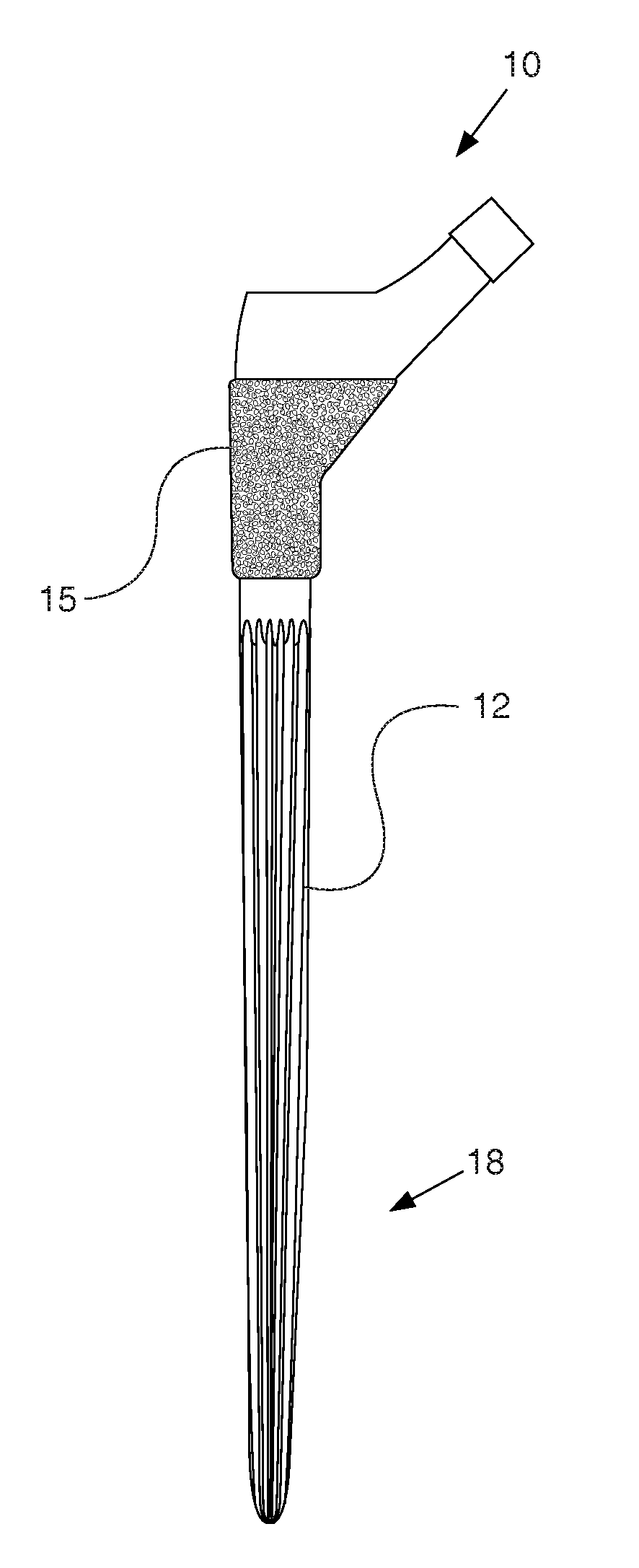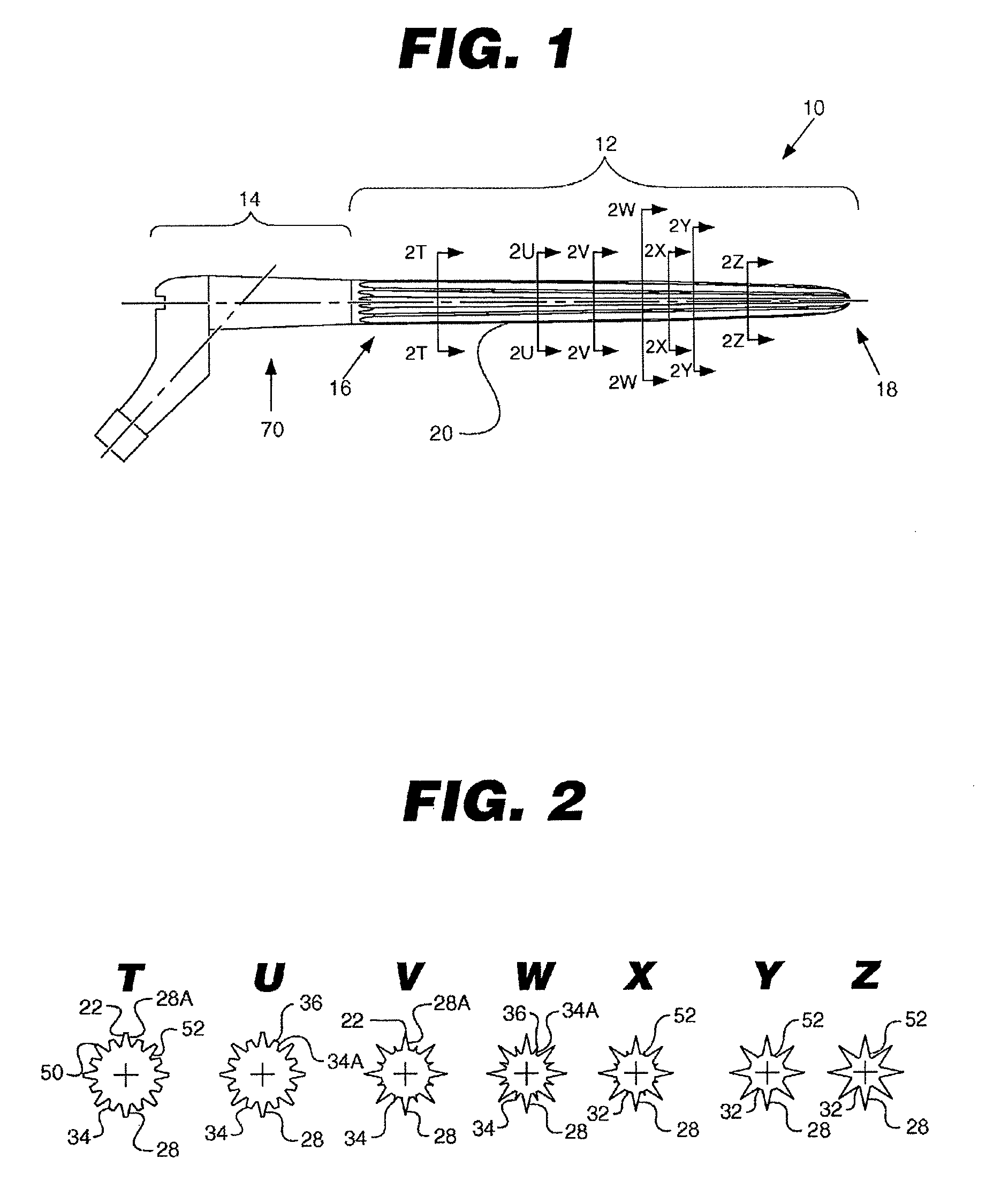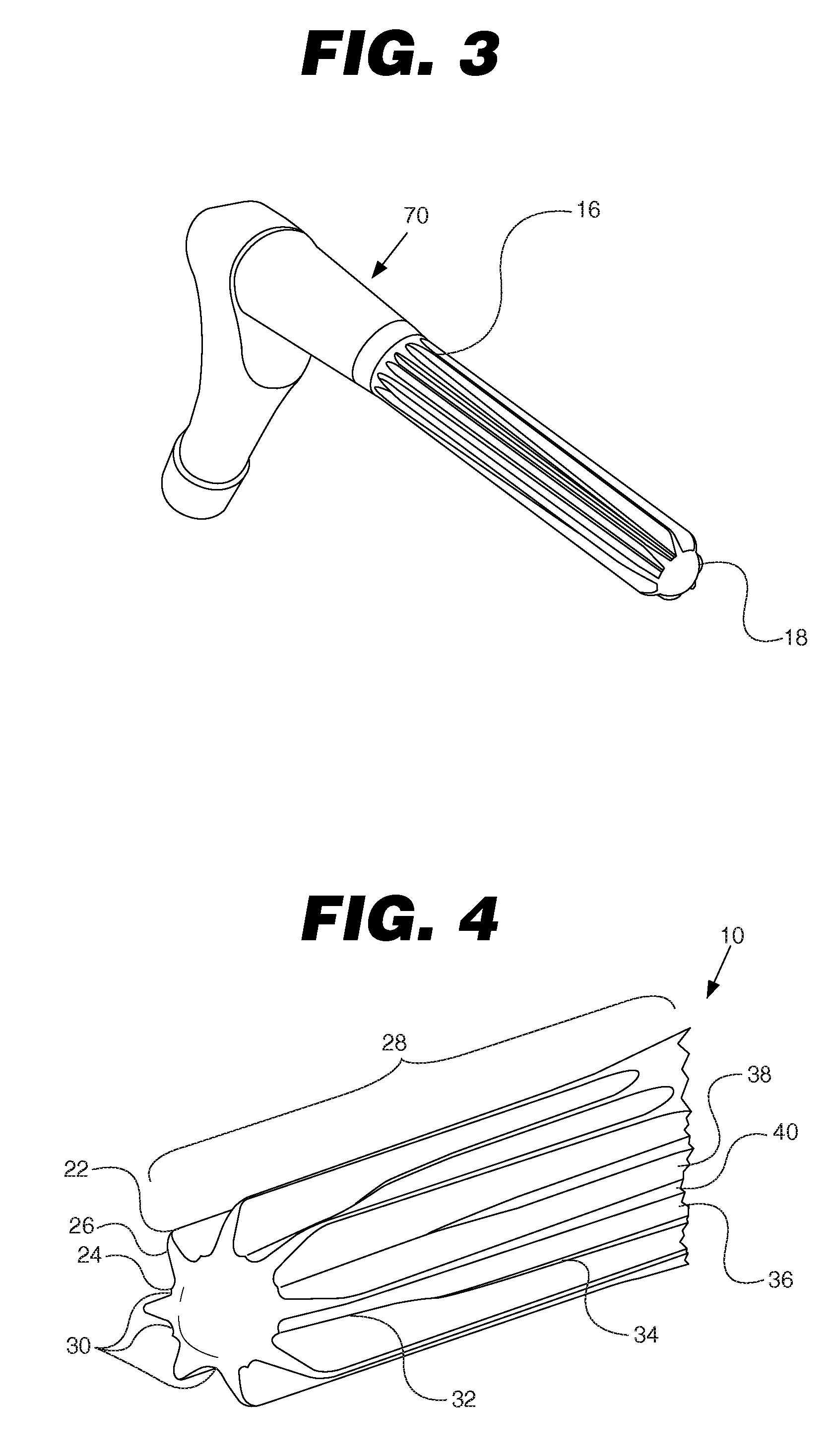Fluted sleeve hip prosthesis for modular stem
a hip prosthesis and modular technology, applied in the field of hip stems, can solve the problems of increasing difficulty in reproducing the height of the femoral neck, and variations in bone quality, and achieve the effect of reducing the complexity of the surgical procedur
- Summary
- Abstract
- Description
- Claims
- Application Information
AI Technical Summary
Benefits of technology
Problems solved by technology
Method used
Image
Examples
Embodiment Construction
[0049]The following description of the preferred embodiment(s) is merely exemplary in nature and is in no way intended to limit the invention, its application, or uses.
[0050]Intramedullary stems developed for enhanced distal stabilization are often formed as cylindrical stems, grit-blasted tapered stems, or long stems (which are often necessarily bowed due to their use and the patient's anatomy.) All of these stems have drawbacks. For example, most bowed stems limit the surgeon's ability to orient the stem; if it is not modular, the stem can only be implanted such that the bow corresponds to the natural curve of the patient's bone. Accordingly, the present invention provides an alternate to current stems, while still providing enhanced distal fixation, modularity options, enhanced stabilization, and flexibility.
[0051]As shown in FIG. 1, intramedullary implant 10 has a shaft 12 with a longitudinal length and an upper stem portion 14. The intramedullary implant 10 also may be referred...
PUM
| Property | Measurement | Unit |
|---|---|---|
| time | aaaaa | aaaaa |
| time | aaaaa | aaaaa |
| time | aaaaa | aaaaa |
Abstract
Description
Claims
Application Information
 Login to View More
Login to View More - R&D
- Intellectual Property
- Life Sciences
- Materials
- Tech Scout
- Unparalleled Data Quality
- Higher Quality Content
- 60% Fewer Hallucinations
Browse by: Latest US Patents, China's latest patents, Technical Efficacy Thesaurus, Application Domain, Technology Topic, Popular Technical Reports.
© 2025 PatSnap. All rights reserved.Legal|Privacy policy|Modern Slavery Act Transparency Statement|Sitemap|About US| Contact US: help@patsnap.com



